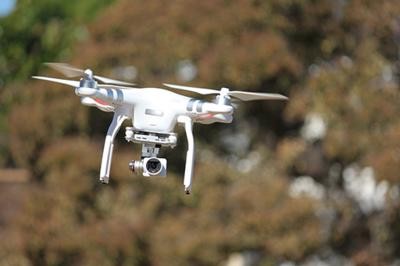Tue, Dec 26, 2023
Autonomous Industry Benefits From NASA Developments
NASA’s Langley Research Center in Hampton, Virginia has been hard at work, testing out the viability of multiple BVLOS drones flying routes sans a human operator.

Researchers are carrying out their small-scale tests using some simple, affordable drone units to see exactly what kind of infrastructural advancements need to be made behind the scenes. While autonomous aircraft are increasingly capable enough to fly a full mission from start to finish, the delicate symphony of dozens all operating in close proximity adds considerable complexity to the affair. NASA's testing is aimed at bearing out the issues, problems, and pitfalls of a hypothetical environ filled with uncrewed, autonomous air taxis, and they're already learning a lot.
“Flying the vehicles beyond visual line of sight, where neither the vehicle nor the airspace is monitored using direct human observation, demonstrates years of research into automation and safety systems, and required specific approval from the Federal Aviation Administration and NASA to complete,” said Lou Glaab, branch head for the aeronautics systems engineering branch at NASA Langley.
Traffic systems, communications, flight path management, obstacle avoidance, and operational resilience will add serious complexity to the otherwise uncomplicated A to B of drone operations. NASA's public ownership allows them to be a frontrunner of burgeoning tech that might otherwise languish in obscurity were it developed by private companies.
Some recent items were "ICAROURS (Integrated Configurable Architecture for Reliable Operations of Unmanned Systems) and the Safe2Ditch system, which allows aircraft to "observe the ground below and make an autonomous decision on the safest place to land in the event of an in-flight emergency." Both suites are aimed squarely at improving the safety of public aviation, and thanks to the taxpayer's (forced) generosity, the commercial sector can be equipped with the tools it needs to keep the traveling public safe.
More News
Known Traffic With respect to ATC clearances, means aircraft whose altitude, position, and intentions are known to ATC.>[...]
Aero Linx: Aviation Suppliers Association (ASA) Established February 25, 1993, the Aviation Suppliers Association (ASA), based in Washington, D.C., is a not-for-profit association,>[...]
Abeam An aircraft is “abeam” a fix, point, or object when that fix, point, or object is approximately 90 degrees to the right or left of the aircraft track. Abeam indic>[...]
Aero Linx: The Air Charter Safety Alliance The group, called the Air Charter Safety Alliance, will raise awareness of illegal charter flights among potential customers, charter bro>[...]
“For months, ALPA has been sounding the alarm on the ongoing efforts by some aircraft manufacturers to remove pilots from the flight deck and replace them with automation. To>[...]
 ANN's Daily Aero-Term (06.10.24): Known Traffic
ANN's Daily Aero-Term (06.10.24): Known Traffic ANN's Daily Aero-Linx (06.10.24)
ANN's Daily Aero-Linx (06.10.24) ANN's Daily Aero-Term (06.11.24): Abeam
ANN's Daily Aero-Term (06.11.24): Abeam ANN's Daily Aero-Linx (06.11.24)
ANN's Daily Aero-Linx (06.11.24) Aero-News: Quote of the Day (06.11.24)
Aero-News: Quote of the Day (06.11.24)



